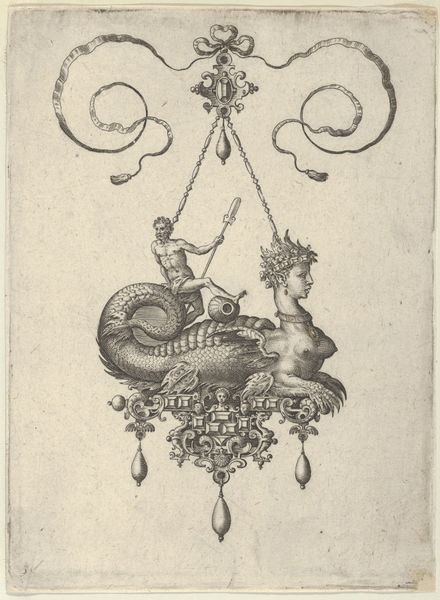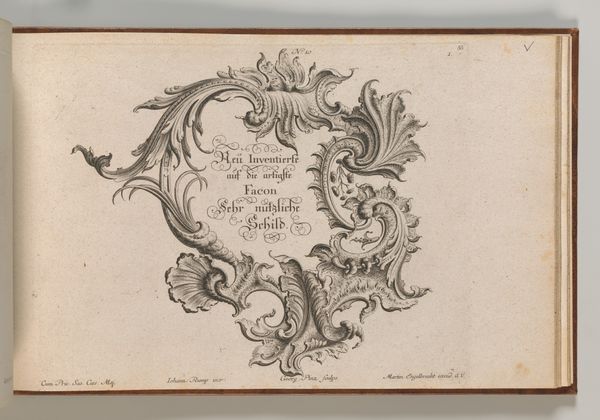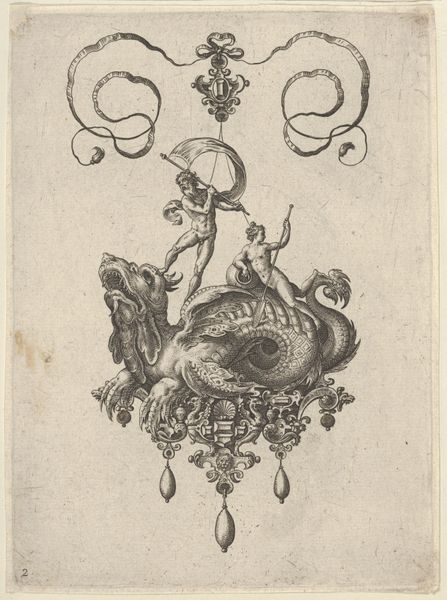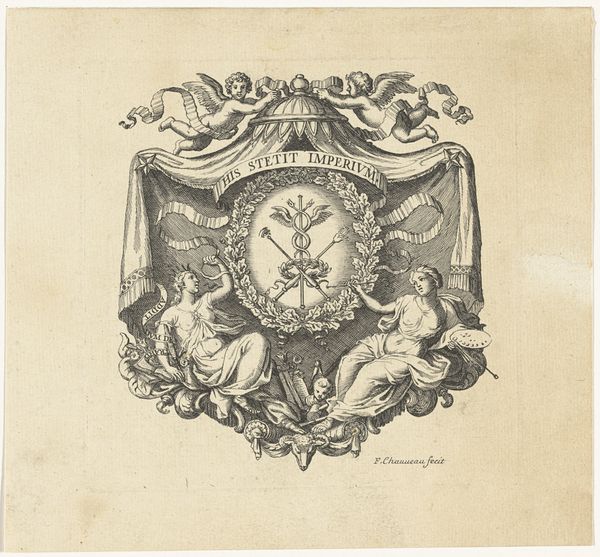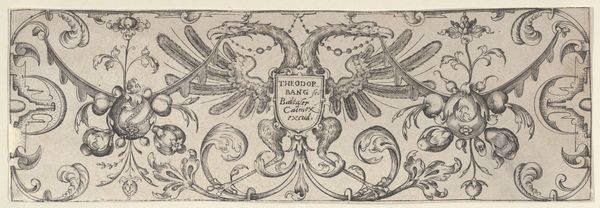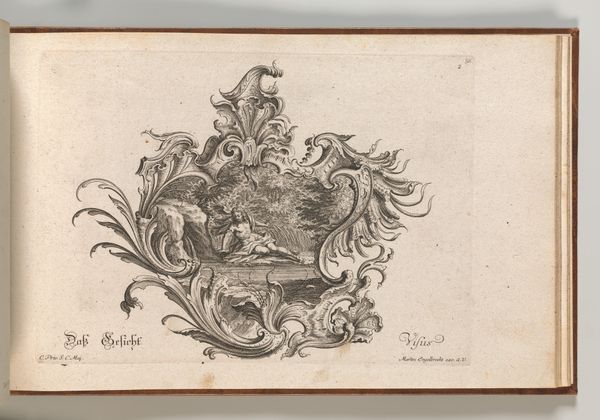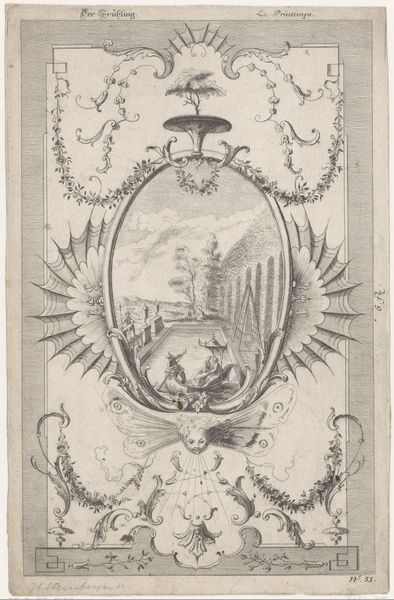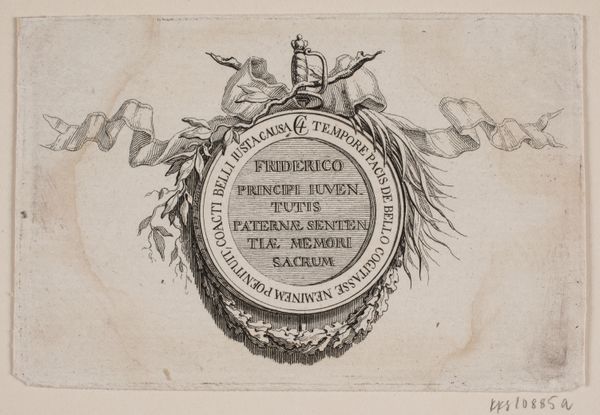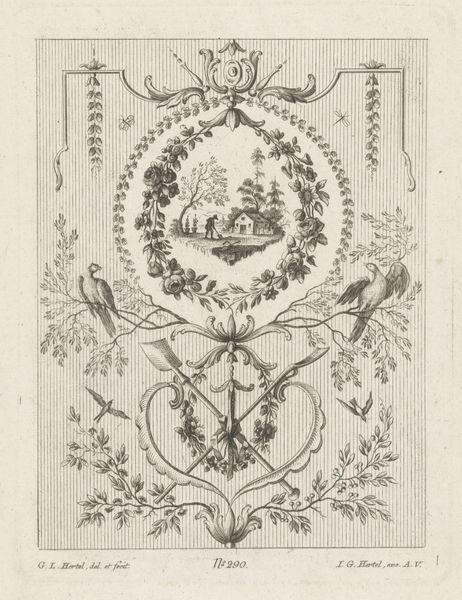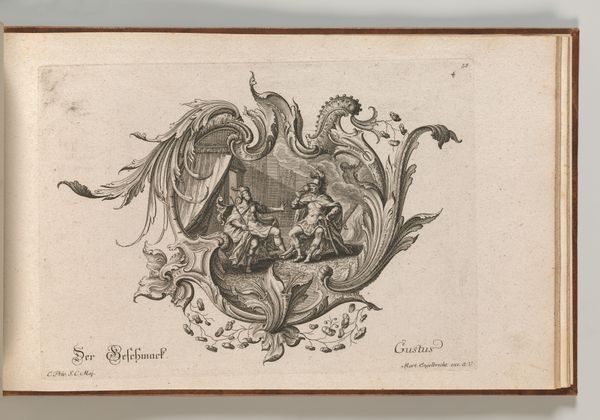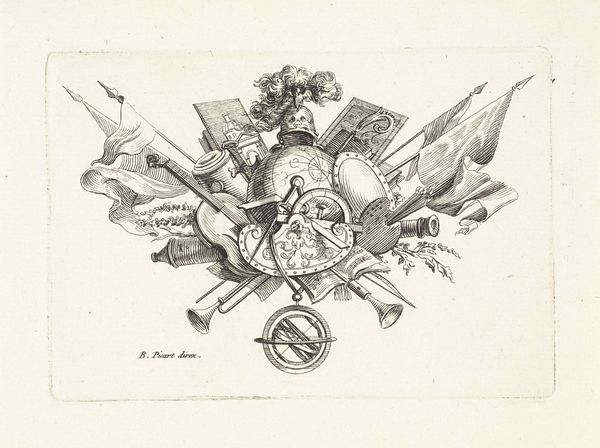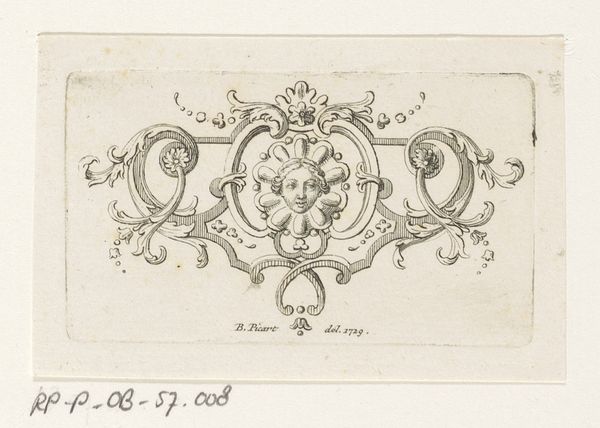
drawing, print, ink, engraving
#
drawing
#
baroque
#
pen drawing
# print
#
pen illustration
#
pen sketch
#
old engraving style
#
personal sketchbook
#
ink
#
ink drawing experimentation
#
pen-ink sketch
#
line
#
pen work
#
sketchbook drawing
#
decorative-art
#
sketchbook art
#
engraving
Dimensions: height 21 mm, width 75 mm
Copyright: Rijks Museum: Open Domain
Curator: Editor: This is "Schelp met gebladerte," or "Shell with Foliage," a 1729 drawing by Bernard Picart, currently held at the Rijksmuseum. The delicate lines and composition create such a serene and balanced effect. How would you approach analyzing it? Curator: Well, beyond the visual balance, I see a direct engagement with materials and production. Consider the engraver’s tools, the labor involved in meticulously creating these lines. It wasn't about 'artistic inspiration' alone; it's about skill, training, and a very deliberate process. The print itself as a commodity reflects a larger system of production and consumption, doesn’t it? Editor: That's interesting! I hadn't thought of the printmaking aspect so explicitly. So, rather than focusing on the beauty of the shell itself, you’re drawn to the physical act of its creation and its place in the art market? Curator: Exactly. Think about the accessibility prints offered compared to original paintings. This image could be reproduced and disseminated, making art available to a wider audience. How does that challenge traditional notions of art as unique and precious, attainable only by the wealthy elite? Where do drawings, sketches, and prints fit into the production of 'fine art?' Editor: So, you’re suggesting the print medium democratizes art by changing how it’s consumed and challenging that hierarchy? It’s a pretty subversive thought considering the baroque context! Curator: Precisely. Also, what kind of labor made this possible, both on Picart's side, and, indirectly, in procuring the raw materials needed for printmaking? How were the economic relations embedded within such a 'decorative' piece? Editor: Wow, I never would have looked at this little drawing and thought about its potential social impact and the complex networks it represents! I’m walking away with a much deeper understanding of prints and other reproducible media! Curator: Indeed, it prompts us to consider what art actually *does* and how it functions within specific material and economic realities.
Comments
No comments
Be the first to comment and join the conversation on the ultimate creative platform.
